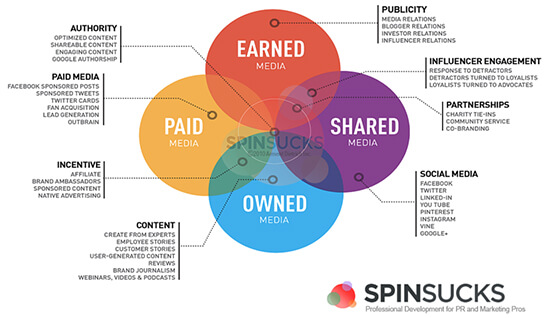
By Jim Hawker
Without realizing it, I discovered last year that I had actually built an agency around the PESO model.
I just wasn’t aware that it had a terminology that had been created by Gini Dietrich, but in my defense, I contacted Gini straight away to let her know that we seem to have inadvertently followed her advice and to let her know how we are getting on!
As part of that conversation, we agreed I would share some of the experiences that we have had since reengineering our business model.
Three years ago, I merged my PR agency with an online media buying agency.
Rather unusually and unlike most mergers, this move was orchestrated by two strong and growing independent agencies that did it for one key reason: To improve the quality of client work.
It was at the time of the Google Panda update when I could see that we needed to improve the data and technical ability of the agency and the principal of the other agency could see that the better development of content and its placement would be key to their SEO campaigns.
Rather inadvertently, neither myself nor the other agency principal could have predicted that a considerable number of the campaigns that we run today would be so dependent upon having paid media expertise within the agency.
Whether that is social media programs, targeted content distribution or native campaigns, my previous agency would have struggled without the requisite knowledge in the room.
The merger has allowed us to create integrated teams depending on the client briefs that come into the agency.
How We Embraced the PESO Model
Threepipe today is made up of 60 full-time staff and we have a broad skill set within the agency that allows us to run true PESO model-led campaigns.
Half the agency is what I would consider PR and social media experts, while the other half is made up of paid media and SEO expertise. We are supported by a full-time design studio that develops the content we need.
The last three years have been very interesting and we have learned so much about constructing an agency offer around the PESO model.
The truth is some clients are just not ready for it or indeed interested in it.
When we find clients that get it then we cling to them and use them as case studies for what can be achieved when you have a more integrated mind-set.
The PESO model is unsurprisingly most effective when centered around content.
For one client in particular we are running their website, eCRM, social CRM, paid social, SEO, and their media relations—all centered around a content strategy.
Having a holistic view of their program and their content is reaping massive awards.
Though…Not Everything is Integrated
Approximately 30 percent of our work is what I would consider integrated—and by that I don’t mean PR plus social (as many agencies would define it).
When we first launched our proposition, I think we were guilty of saying we could do everything and clients didn’t want that.
What works best for us is when we respond to their original (and often narrower) brief and then start to broaden the scope of work once we have a foot in the door.
We have also realized we can most effectively work with clients when we are working with marketing directors and not PR managers.
CMOs have a more holistic view of their program and have the ability to move budgets around accordingly.
PR people have tended to be very focused just on media relations and their digital knowledge is less advanced.
From a sector perspective, it is also clear B2B is more receptive to an integrated approach than consumer sectors, possibly because they have more experience of working with inbound marketing teams and understand the role of content through the sales funnel.
They can talk our language.
The PESO model works best for us when we are working for what we would call Tier two organizations—those that do not have a roster of agencies fighting over one another.
A rostered approach makes it much harder to construct integrated campaigns. It isn’t impossible, but a lot harder.
Where we do work on a roster, whether it’s for social commerce, PR, or SEO, then the attraction of working with us is we do at least understand what the other agencies want and need from us.
Simplified 2016 Positioning
We refined our positioning for 2016 and simplified it, changing from being a multi-channel agency to being a digital marketing and PR agency that can deliver joined-up thinking.
This does allow us more creative wiggle room to apply a more integrated approach to match what clients want, without frightening them off!
That would be very bad!
I am optimistic about the future and passionately believe we have created a collection of people who truly understand how to construct modern PR programs.
Eventually the market will catch up, but in the meantime we are doing our bit to bring clients along with us.
How about you? How are you using the PESO model in your jobs?